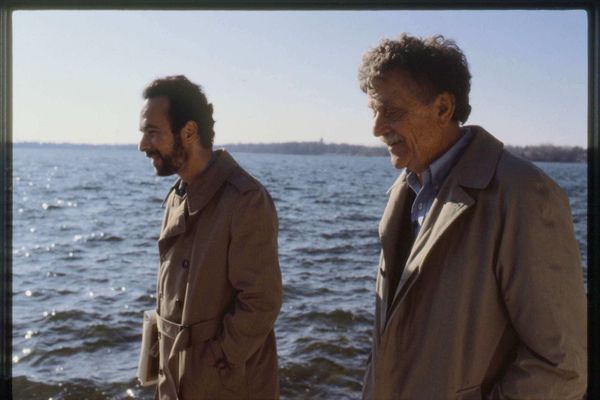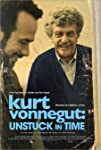Eye For Film >> Movies >> Kurt Vonnegut: Unstuck in Time (2021) Film Review
Kurt Vonnegut: Unstuck in Time
Reviewed by: Jennie Kermode

A real labour of love and one of the most accomplished documentaries of the past year, Kurt Vonnegut: Unstuck In Time is a deeply personal film. It begins with writer/co-director Robert B Wiede explaining why the celebrated author meant so much to him as a kid – first due to his irreverence and then, gradually, due to his more sophisticated ideas – going on to detail their first communication when the 23-year-old Wiede first sought to make a film about him and was gently rebuked but, to his astonishment, adopted as a friend. 25 years of friendship followed, until Vonnegut’s death in 2007, and subsequently, like the fictional Vonnegut interviewing the deceased (and still more fictional) Kilgore Trout in the afterlife, Wiede began putting the pieces together in earnest to tell the author’s story.
To say it begins is, of course, a bit of a misnomer, as you may guess from the subtitle. Vonnegut was not a great believer in the linearity of time, nor in the usefulness of linear narratives. Accordingly, though a conventional thread of history runs through this, Wiede skips back and forth a good deal to examine different ideas and to find earlier connections to apparently new ideas. He endeavours to approach the author’s life as a web, with some degree of success, though one cannot help but think also of that famous drawing of an arsehole which the young Wiede was astonished to discover in a book in his school, with lines extending outwards in all directions. It is a sucking sphincter; it is a shining star. Vonnegut was ready to own both, and Wiede’s take is human and contrary enough that it might have made him smile.

Structural connections bind the two men together. Wiede wrote an adaptation of Vonnegut’s Mother Night. Vonnegut played himself in Alan Metter’s 1986 comedy Back To School, which starred Keith Gordon, the director of Mother Night. Wiede’s home is full of letters and curious bits and pieces which Vonnegut sent him. He spent ten years trying to make this film and explores that, too, in the course of exploring Vonnegut’s life. The author appears in a succession of videotaped interviews, often provocative, laughing; sometimes testing Wiede’s boundaries. The film also captures that melancholy voice which sometimes came through in his writing but which he rarely acknowledged in public as reflective of his own state of mind.
It’s an understandable melancholy. Slaughterhouse-Five didn’t come out of nowhere, but the full extent of Vonnegut’s wartime trauma has rarely been addressed as it is here. The impulsive behaviours which followed, for good or ill, often seem reflective of that. Home videos show how Vonnegut filled up his house with children, taking on his sister’s four kids after she died of cancer and raising them with three of his own. The chaos and joy they brought into his world seems to have enlivened him, even if he shut them out during the long, difficult times when he had to descend again into the darkness to work, or to recognise himself.
This is not a film for Vonnegut fans who are seeking a deep analysis of his literary work, despite it segueing naturally into politics and philosophy from time to time. It is, rather, a portrait of Vonnegut the man, and as such it is both appropriately uneven and marvellously thorough. It is a film full of intimacy and affection, of insight into the effort it takes to be both an artist and a human being, to exist in the world whilst fully aware of its foibles. It is a thing to be valued on its own merits, and if it is not always as rigorous as some might hope, it has, in the end, a quality the author valued more. It is an invitation to be kind.
Reviewed on: 22 Jul 2022















